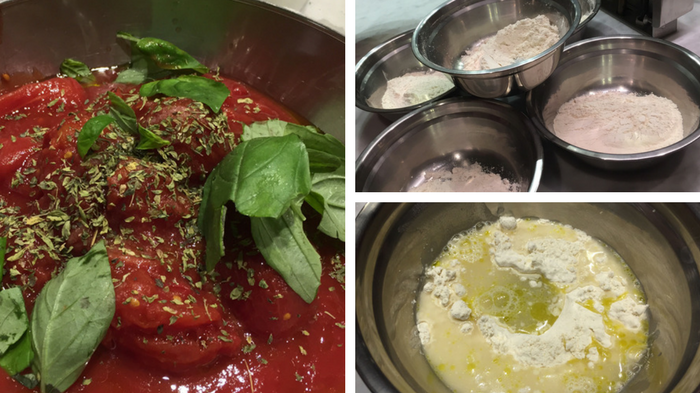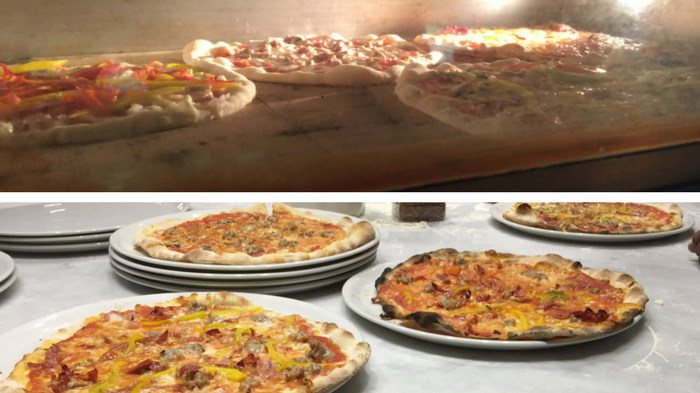Cooking classes are great for solo travelers!
Classes are, by their nature, social. You learn new skills. You learn about the culture through its food. And the class inevitably ends with a delicious meal shared in the company of new (if short-term) friends.
When I was in Rome with Monograms (read Rome and Paris in One Trip and A Fabulous Trastevere Food Tour) I spent a wonderful evening learning to make two of Italy's most iconic foods: gelato and pizza. I participated in the InRome Pizza Making & Gelato Class.
A perfect evening. A perfect meal.
Mmmm. Gelato Making Class in Rome!
Our chef/teacher was Filippo. His attitude towards food reflects what I've come to know about Italians and food in general: simple is better.
This applies to gelato as well.
Complex ingredients found in some gelati are there not for the flavor but for shelf life and appeal to the tourist's eye. As I learned on the food tour I took:
To tell the difference between good and tourist gelato, first look at the color. It should resemble the base ingredients. Pistachio gelato should be pale, not bright green. Banana should be more white than yellow. If there is one fake color in the gelateria you can assume that all the gelato has coloring and other non-essential ingredients. You can also check how the gelato is displayed. Good gelati should be in containers as they don’t naturally stay in mounds. Mounds of gelato are tourist gelato.
So what does the simple recipe include? Cream, egg yolks, and then whatever you choose as your flavor. Possibly some sugar and vanilla, or some Nutella, which the Italians love. It can be flavored any number of ways. But a good gelato remains simple and simply delicious.

Pizza Making Class in Rome
Once the gelato was in the freezer it was time to learn how to make great pizza.
The first thing I learned was that the more time you take to make your pizza crust, the longer you can let it rise, the less yeast you need to use and the tastier it will be. Twenty-four to forty-eight hours is good. A rushed pizza crust with more yeast can feel like it continues to rise in your stomach. A good pizza crust never feels this way and is delicious unto itself. It is the quality base of a great pizza.
We mixed and kneaded (I even tossed) our own crusts, and prepared them into balls. These were then taken from us and replaced with balls of dough that had had the 24-48 hours of rising time. We then rolled these out so that each was thin and topped them with a sauce we made with just a few quality ingredients: tomatoes, fresh herbs, salt, and pepper.
We covered our individual pizza crusts with the sauce and our own desired toppings. Into the oven they went to come out about 12 minutes later, cooked and delicious. We then all sat down to a wonderful meal, followed, of course, with gelato for dessert.
This trip is a project managed by iambassador in partnership with Independence by Globus and other sponsors. Of course, Solo Traveler maintains full editorial control of the content published on this site.






